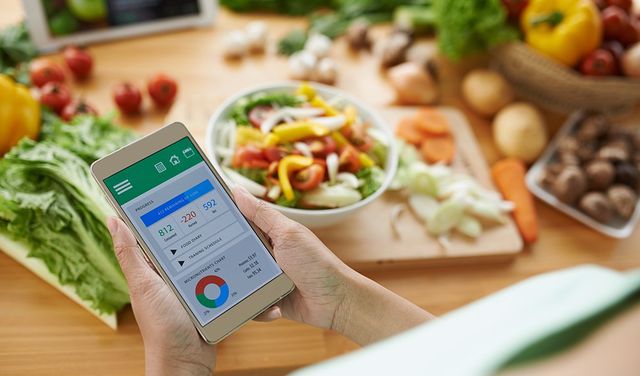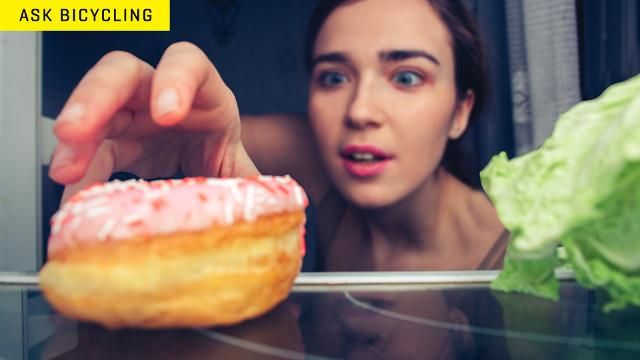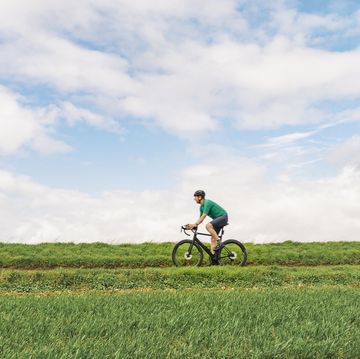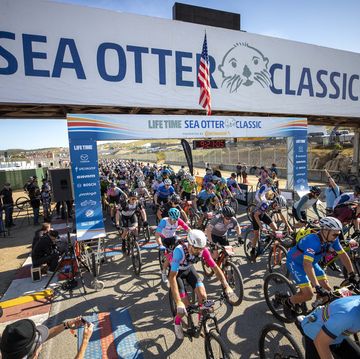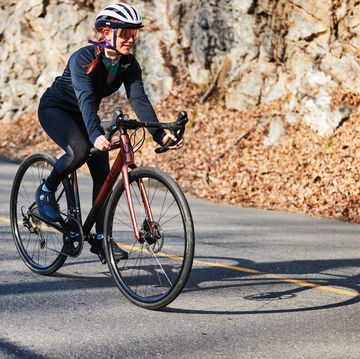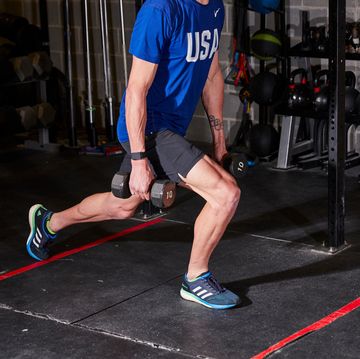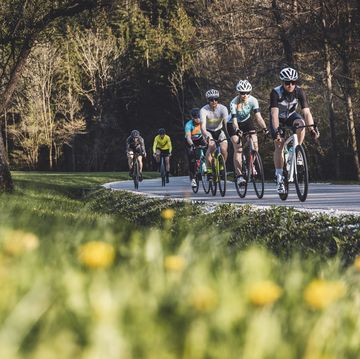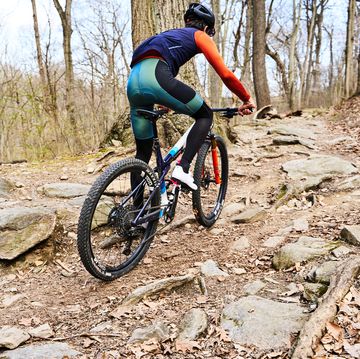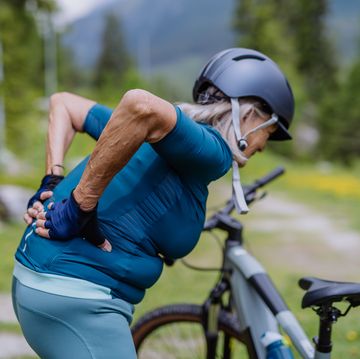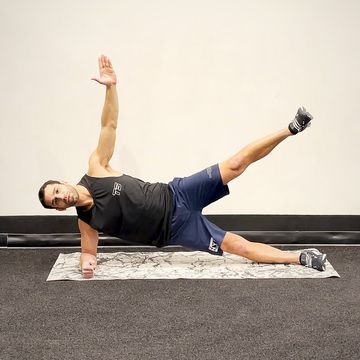After my first season racing bikes, friends quickly advised me: You need a coach. The coach gave structure and balance to my enthusiastic (and haphazard) riding routine, but with the increased training load, I noticed I was starting to feel tired. A lot.
A number of things contribute to feeling sluggish on the bike, my coach noted: If someone's overall health and sleep routine are good, their diet may to be to blame. So I needed to start logging what I ate.
I began tracking my food intake using the MyFitnessPal app. While app-based diet tracking doesn’t work for everyone, it can be a helpful tool depending on your motivations for using it, says Brett Singer, a sports dietician with Houston’s Memorial Hermann IRONMAN Sports Medicine Institute. Plus, the more consistent you are with what you eat, the easier it is to see what’s working and what’s not.
Once I had a few weeks of food tracking data under my belt, some clear and often surprising patterns began to emerged. Once identified, they helped me dial in my diet for better health and performance. Here are my seven biggest takeaways from food tracking—all reasons you might want to try it in some form yourself. (Keep track of your food and exercise all in one place with the tip-packed Bicycling Ride Journal!)
RELATED: The New Rules of Cycling Nutrition
Using a diet-tracking app isn’t that time consuming
I was surprised to find that the MyFitnessPal app is quick and dead-easy to use.
After each meal, I hopped in the app and logged what I ate by tapping a big plus-sign icon at the bottom of the screen. MyFitnessPal has a huge library of foods from which to choose, including branded food you’d find at the grocery store and common restaurant items. If you eat the same things on the regular, the app recognizes that and makes logging repeat items simple.
RELATED: 10 Smartphone Apps That Improve Your Ride
Thanks to a connection with Strava, my calorie burn data from workouts automatically synced, so I could see if I had a calorie deficit or surplus for the day. It also has a social media component, so friends can like one another’s meals or activities.
The thing that ended up being most useful is the Nutrition section, found at the bottom of the Diary page of the app. This shows you a pie-chart breakdown of the carbs, fats, and proteins you’ve consumed that day.
After a few weeks, I found I could enter breakfast, lunch, and snack data in under a minute or two.
The Takeaway: The first week may seem tedious, but after that, using a diet tracker becomes a quick post-meal habit!
Training more but gaining weight? This video shows why it's not so unexpected:
I was low on… carbs?!
Looking at a list of all the foods and calories you consumed in one day doesn't give you that much insight. More useful: Seeing your diet in terms of trends over time.
RELATED: Why You Should Stop Stressing About Eating Carbs
MyFitnessPal has a nutrition section with a “Macros” pie chart of your daily carb, fat, and protein consumption. After a few weeks, I learned that I was eating far too few carbs (and a bit too much fat) to properly fuel my cycling routine. My coach recommended a breakdown of 50 percent carbs, 30 percent fat, and 20 percent protein for my diet—but some nutritionists recommend upwards of 60 percent carb intake for cycling diets. Carbs are especially vital for fueling short, high-intensity efforts like sprints.
The Takeaway: Experts debate the proper macronutrient breakdown for cyclists, but if you're tired on the bike, try checking your ratios: You might not be giving your muscles enough of the right fuel, and too much of others.
I was choosing the wrong carbs
After upping my carb intake, I saw the positive results almost immediately in my performance. But I realized I'd wake up starving in the middle of the night when my carb-loaded dinners were composed of white bread or pasta, per my food log. That's because while I’m hitting my personal carb goals with simple, I’m not maximizing their nutritional value.
By swapping in more whole grains and ancient grains, I can get my carb intake and feel fuller faster—often winding up eating fewer calories.
The Takeaway: Not all calories are created equal—even when they offer the same macronutrients. By logging the specific food you eat as well as your macros, you can determine whether you can get away with eating certain foods, or if the quality of your macros is impacting your performance.
Eating boatloads of pasta is a surefire way to hit the percentage of carbs you need in your diet (and that may be a necessity during back-to-back race days), but carb sources such as couscous, quinoa, and fruits and veggies are more satiating—and that's important for weight management.
I wasn’t eating enough iron-rich foods
Once I settled into my new eating regimen, I still noticed regular dips in my performance, like clockwork, around my period. I decided to take a look at my vitamin intake history, which revealed I was getting almost no iron in my diet. Iron is extremely important for endurance athletes, as it helps transport oxygen to your muscles and helps your body create its main energy source, ATP. By adding more leafy greens and red meat into the mix, I again found a boost in performance (also steak is delicious, right?).
RELATED: The Truth About Vitamin and Mineral Supplements
The Takeaway: Choosing a food tracking program that allows you to track not just macros, but also micronutrients—vitamins and minerals—may help you identify deficiencies in your diet, or even natural deficiencies you'll need to supplement.
I wasn’t eating enough on the bike
When I first started riding, I barely ate on the bike. In fact, I had a weekly ride dubbed “Bloks for Breakfast” because I would only eat a couple Clif Bloks over the entire 45-mile route. Fast-forward a few years: I learned to eat more on the bike, but I was having trouble staying with the pack during intense surges, and felt bonky towards the end of 3-plus-hour rides. Luckily, I had my food log.
By tracking how much ride food I ate, my coach helped me realize that eating 100 calories on average every 30-60 minutes wasn't enough to sustain my calorie burn levels; I needed to consume 100 calories roughly every 20 minutes. Suddenly, those long rides were a breeze.
RELATED: How Much Do You Really Know About Calories?
The Takeaway: Tracking your carb and calorie intake on the bike—along with how you feel on your rides—over the long term, and compare it against your calorie burn. You'll find your optimal fueling balance so you can ride longer.
Proper hydration makes a huge difference
Even if you're drinking enough water, you might not be drinking it correctly. The only sure way to know if your hydration is on track, is to track not only how much H2O you’re downing in total but also when you're downing it, and how.
I found that while I did a good job of drinking liquids in the mornings, I wasn’t hydrating well through the afternoon hours—which were often followed by a dehydrating round of beers in the evening. When I added a few more glasses of water to my day, the biggest thing I noticed was how much easier it was to fall asleep each night. And better sleep means better recovery, which means a better workout tomorrow.
RELATED: 5 Common Hydration Mistakes
The Takeaway: We aren't obsessing about meeting our basic needs 24/7—so even if you think you're doing well with something like hydration, that might be because you're only aware of it, when you're doing it. Plus, you might accidentally be undoing hydration's health benefits by failing to consider it in the context of the rest of your diet: Drinking water doesn't do you any good if you dehydrate yourself with equal amounts of espresso.
Once you up your intake of water and dial back your sabotaging habits, many aspects of your life will improve, from your cycling performance to sleep to skin quality.
The way my body gains (and loses) weight
After tracking my typical food and drink intake as well as my weight for a while, I was then able to establish a baseline and start experimenting: What happens if I quit drinking alcohol at dinner? What happens if I change my morning breakfast routine?
I learned that if I cut out that daily glass (or two) of beer or wine, I’d lose a pound or two a week. And if I wanted to gain some weight back, I could add salmon to my breakfast bagel and those healthy fats and calories would bring my weight back up.
The Takeaway: Food tracking helps you better understand how your unique body functions—and how it functions best. Having a baseline from which to experiment means you'll learn what kinds of food and drink cause you to most easily gain or lose pounds. This helps you achieve and then maintain your ideal healthy weight—and even better, keep that weight while performing at the top of your game.
